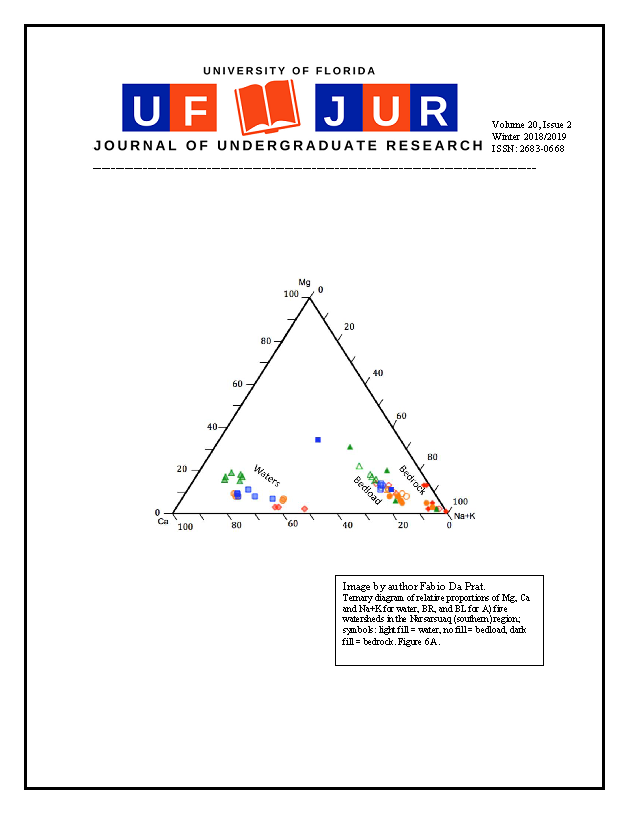Graphene Support Effects on Palladium Catalyzed Reactions
DOI:
https://doi.org/10.32473/ufjur.v20i2.106191Abstract
Palladium catalysts are often anchored to a support, such as graphitic carbon, to increase their overall surface area and facilitate catalytic reactions. There is a potential for interaction between the support and the catalyst, which can affect such reactions. At a certain palladium size threshold, it is hypothesized that the effects of the support on reactions on Pd are negligible. To determine this threshold, the Pd catalyst size and shape were varied (size was varied in the number of layers and number of Pd atoms, while shape ranged from hemispherical to spherical). The Pd clusters ranged from 2-5 layers and 38-293 atoms. Also, the graphene support was functionalized to different extents to test its effect on catalytic reactions on Pd. Initially, adsorption reactions of H*, O*, C*, OH*, and CH* onto supported Pd were tested to determine the effects of catalyst shape and size on the binding energy of such adsorbates. Periodic density functional theory calculations were used to determine these binding energies on bare Pd, Pd on a pure graphene support, and Pd on graphene functionalized with oxygen and hydroxide. These tests revealed that smaller Pd particles (about 100 atoms or fewer) are influenced by the support, showing large shifts in adsorbate binding energy from the pure graphene to the functionalized graphene. This shift in binding energy indicates that there are major changes in the catalytic behavior of sites upon which the adsorption reaction was tested, meaning that sites near the Pd-graphene interface might be affected by the support.
Downloads
Published
Issue
Section
License
Some journals stipulate that submitted articles cannot be under consideration for publication or published in another journal. The student-author and mentor have the option of determining which journal the paper will be submitted to first. UF JUR accepts papers that have been published in other journals or might be published in the future. It is the responsibility of the student-author and mentor to determine whether another journal will accept a paper that has been published in UF JUR.

